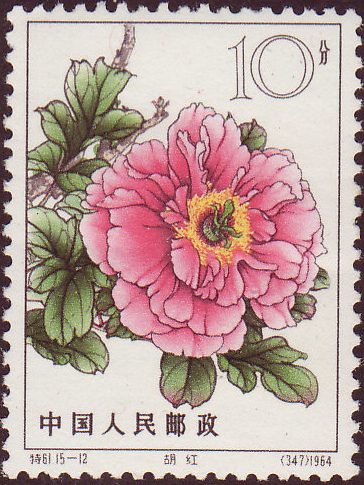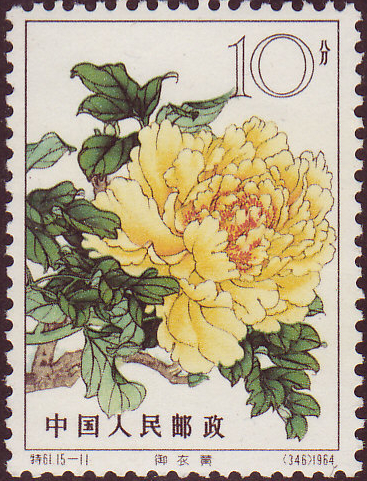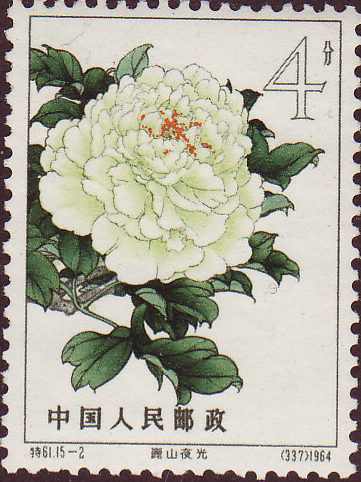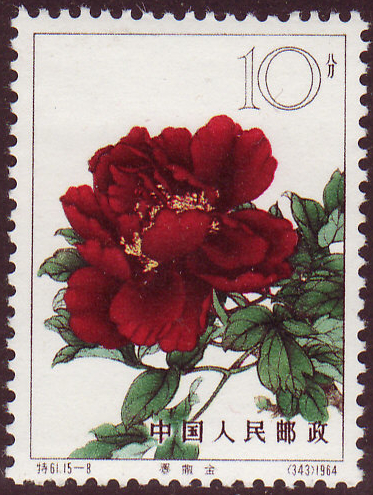In 1964 the Chinese post office printed a beautiful set of stamps which showcased some classical varieties of tree peonies. Just a few short years later Chairman Mao unleashed the Great Proletarian Cultural Revolution on the Chinese people and such a celebration of traditional art and culture became impossible. How some the largest tree peony gardens managed to escape the ravages of ‘class struggle’ and the Red Guards is a fascinating story for another blog post.
When we first began to import tree peonies from China in the late 1980s these stamps were the most definitive reference we could find as a guide for choosing varieties. At the time there were no good English language sources on Chinese tree peonies. We even used the images from these stamps in our first illustrated catalog in 1993.
In the two decades since, we have test grown most of the classical varieties illustrated in the stamp series. While they have been celebrated for hundreds of years for their undeniable beauty we have found some of them fickle and relatively weak growers. Some of the more recently developed varieties make for more vigorous and gratifying garden specimens. Also, certain prized colors like yellow are idealized in in these stamps, while in reality the flower is quite paler in color.
Many varieties of Chinese tree peonies, including those featured in this stamp series have been continuously cultivated for centuries. We help to continue this great and worthy tradition by selling only true to name varieties. Moreover, we try to explain the stories behind the names of individual cultivars. While a name adds nothing to the beauty of beholding a tree peony in bloom, to those interested, understanding it’s significance lends another layer of enjoyment in cultivating peonies. They are truly horti(cultural) artifacts.
Enjoy these beautiful images and the contrast between the artists renditions and the pictures taken in our garden. When available, we have tried to give some background information regarding the names of these cultivars. This research is a work in progress and any additional information which readers may be able to provide would be greatly appreciated.
Twin Beauty is named after the Qiao sister in the historical epic, Romance of the Three Kingdoms. The two beautiful sisters were said to be “beauties whose faces would make fish forget to swim or birds to fly, abash the very blossoms and outshine the moon.” The warlord General Cao Cao coveted their affection and sought to capture them in order to place them in his Bronze Bird Tower; this intrigue was one of the main causes of the Battle of the Red Cliffs in 208-09 CE.
We have found this classical variety to be a fine addition to our peony collection. Depending on soil and fertilization conditions, flowers may bloom variegated, all pink or all red. We currently have Twin Beauty in stock for fall 2011 shipping (2/3 yr. old tree peony $89, 3/4 yr. old tree peony $125)



























